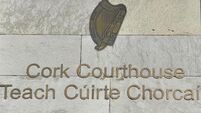WikiLeaks: More Afghan war documents to come
The White House, Britain and Pakistan have all condemned the online whistle-blowing group’s release of the classified documents, one of the largest unauthorised disclosures in military history. The Afghan government in Kabul said it was “shocked” at the release but insisted most of the information was not new.
The documents cover some known aspects of the troubled nine-year conflict: US special operations forces have targeted militants without trial, Afghans have been killed by accident, and US officials have been infuriated by alleged Pakistani intelligence cooperation with the very insurgent groups bent on killing Americans.














